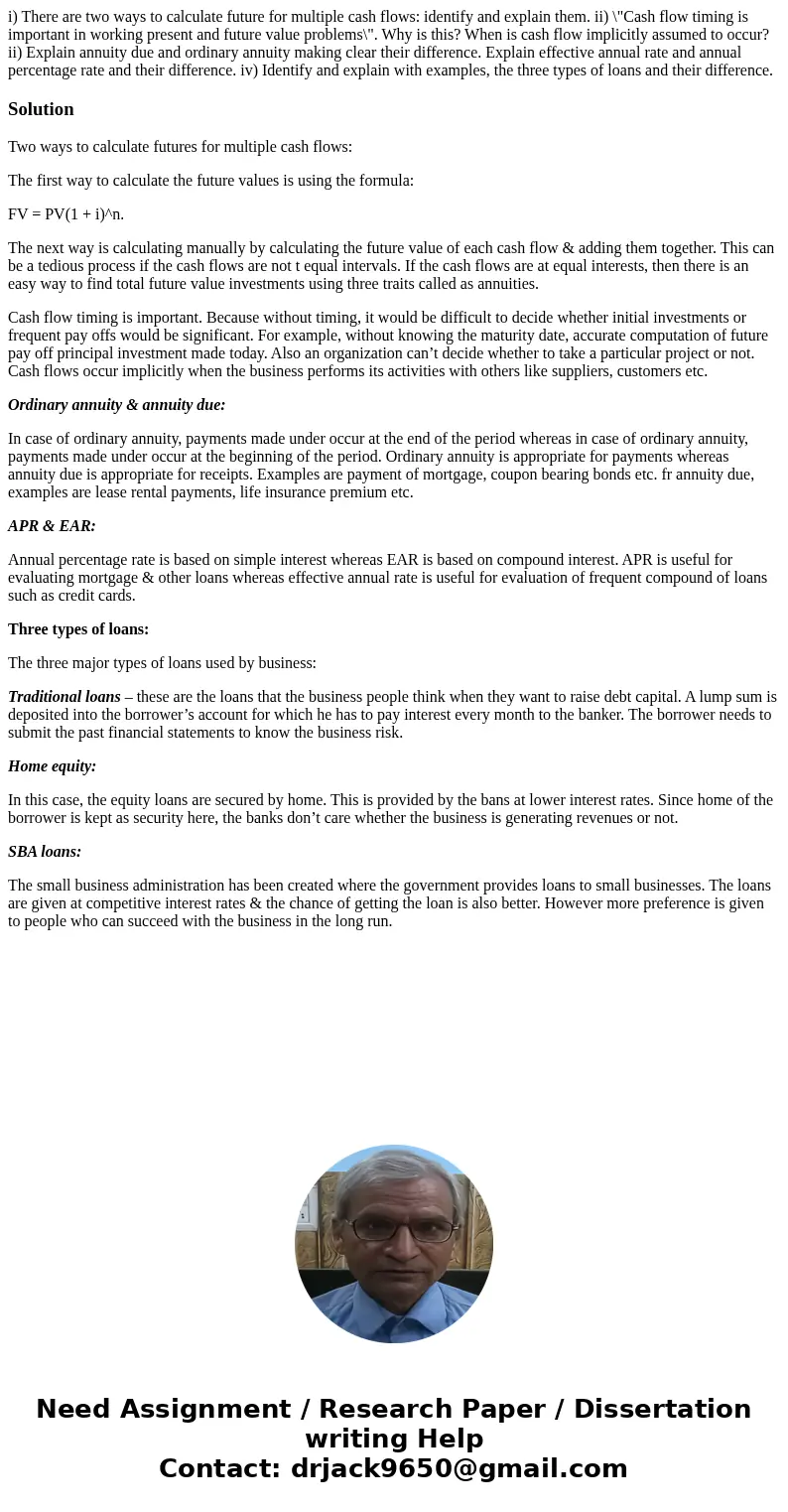i There are two ways to calculate future for multiple cash f
Solution
Two ways to calculate futures for multiple cash flows:
The first way to calculate the future values is using the formula:
FV = PV(1 + i)^n.
The next way is calculating manually by calculating the future value of each cash flow & adding them together. This can be a tedious process if the cash flows are not t equal intervals. If the cash flows are at equal interests, then there is an easy way to find total future value investments using three traits called as annuities.
Cash flow timing is important. Because without timing, it would be difficult to decide whether initial investments or frequent pay offs would be significant. For example, without knowing the maturity date, accurate computation of future pay off principal investment made today. Also an organization can’t decide whether to take a particular project or not. Cash flows occur implicitly when the business performs its activities with others like suppliers, customers etc.
Ordinary annuity & annuity due:
In case of ordinary annuity, payments made under occur at the end of the period whereas in case of ordinary annuity, payments made under occur at the beginning of the period. Ordinary annuity is appropriate for payments whereas annuity due is appropriate for receipts. Examples are payment of mortgage, coupon bearing bonds etc. fr annuity due, examples are lease rental payments, life insurance premium etc.
APR & EAR:
Annual percentage rate is based on simple interest whereas EAR is based on compound interest. APR is useful for evaluating mortgage & other loans whereas effective annual rate is useful for evaluation of frequent compound of loans such as credit cards.
Three types of loans:
The three major types of loans used by business:
Traditional loans – these are the loans that the business people think when they want to raise debt capital. A lump sum is deposited into the borrower’s account for which he has to pay interest every month to the banker. The borrower needs to submit the past financial statements to know the business risk.
Home equity:
In this case, the equity loans are secured by home. This is provided by the bans at lower interest rates. Since home of the borrower is kept as security here, the banks don’t care whether the business is generating revenues or not.
SBA loans:
The small business administration has been created where the government provides loans to small businesses. The loans are given at competitive interest rates & the chance of getting the loan is also better. However more preference is given to people who can succeed with the business in the long run.

 Homework Sourse
Homework Sourse